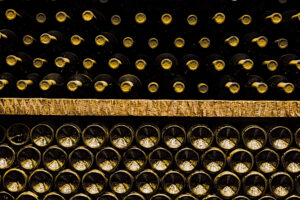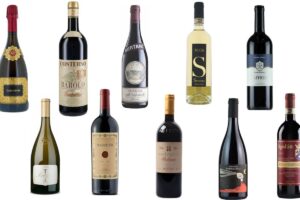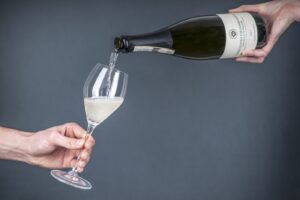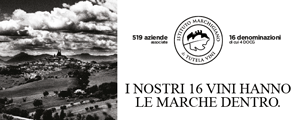New Year’s Eve, time for financial report: it's rosy for made-in-Italy sparkling wine, which has officially beaten Champagne. There will be 936 million bottles of Italian sparkling wine uncorked worldwide in 2023, more than triple the number of French bottles, which will drop to just 300 million. This emerges from a Coldiretti analysis, which shows that, at the end of the year, a value of sparkling wine exports abroad of more than 2.2 billion (+3%) was reached for the first time, based on a projection of Istat data. And the end-of-the-year festivities also record the peak in domestic demand, with 95 million bottles uncorked in Italy alone between Christmas and New Year’s Eve, a clear victory over the 6 million bottles of foreign sparkling wines. Overall, for the New Year’s Eve dinner, Italians spent 2.5 billion euros on food and drinks, which nearly nine out of ten (87%) consumed in their own homes or those of relatives and friends, while the others divided between restaurants and pizzerias. But, now almost archived the festivities in anticipation of Epiphany, Italians are now grappling with leftovers: according to Coldiretti, on the tables of more than four out of five Italian families (82%), uneaten food from New Year’s Eve and January 1 lunch is recycled and reused in the kitchen, partly due to a growing awareness of reducing waste for economic, ethical and environmental reasons.
2023 was a golden year for our sparkling wines: more than two-thirds of the total consumption is uncorked abroad, for a total of 650 million bottles, with made-in-Italy toasts clearly dominating internationally ahead of French Champagne, which, however, still manages to fetch significantly higher prices. Outside national borders, Coldiretti continues, the most passionate consumers are the Americans, where, however, Italian sparkling wines fell for the first time in value by 11%, while in second place are the British, up 2%. On lower values is Germany, but with +8% in value. Italian sparkling wine is also very popular in Putin’s country, with an 18% increase in Russia, despite the tensions caused by the war. Native sparkling wines are now challenging Champagne on an equal footing at home as well, so much so that it is precisely in the transalpine market that record sales growth of +26% has been recorded, placing France as the fourth largest customer. Leading the ranking of domestic production is Prosecco, with a 70% incidence of bottled sparkling wines, which has made it one of the symbols of Made in Italy abroad. But, on holiday tables, a little bit of all national bubblies are now present, from Franciacorta to Asti, from Trento Doc to small productions, which have spread quickly from Abruzzo to Sicily, passing through Tuscany, Marche, Lazio and Umbria. Examples include Trebbiano, Verdicchio, Oltrepò, Alta Langa, Moscato, Falanghina, Grechetto, Malvasia, Grillo, Nero d’Avola, Negroamaro, Durello and Vermentino.
The success of made in Italy is also overwhelming at the national level, with the end-of-year festivities recording the highest demand for sparkling wine, with about 95 million corks of spumante uncorked in our country between Christmas and New Year’s Eve, with a clear victory over the 6 million bottles of Champagne. Nearly 9 out of 10 Italians (89%) have not given up making a toast made in Italy at the end of the year, according to the Coldiretti/Ixé survey: it is the product most present on the tables of Italians, followed by lentils - unfailing in 85% of menus, also because they are called to bring good luck, according to ancient beliefs - while, in third place on the podium, also rises cotechino or zampone (70%). Also rewarded are grapes (56%), pomegranate fruits, dried fruits and chili peppers. Significant purchases of domestic seafood, starting with anchovies, clams, sole, mullet, eel, eel and cuttlefish, but 65% of Italians sampled salmon arrived from abroad, 9% indulged in oysters and 5% in caviar, often domestically produced. An average of 98 euros per family was allocated to the table for the New Year’s Eve dinner, a slight increase over 2022 (+2%). For New Year’s Eve dinner, Italians spent 2.5 billion euros on food and beverages, which nearly nine out of ten Italians (87 percent) consumed in their own homes or those of relatives and friends, while the rest were divided between restaurants and pizzerias chosen by 4.6 million people, with 350,000 attending agritourisms.
Now, on the tables of more than four out of five Italian households (82%) it’s time to recycle leftovers: according to the Coldiretti/Ixé survey, only in 9% of homes nothing was left over from holiday banquets, while 4% donated to charity, and only 1% say they throw leftovers in the bin. The alternative to storing in the refrigerator is transforming leftovers into new dishes with so-called “next-day cooking”. Meatballs or meatloaves made from meat or fish tartare are great ways to salvage food from the day before, but omelettes can also give a new flavor to vegetable or pasta dishes, not to mention ratatouille. Extra dried fruit can be easily caramelized to make excellent nougat, while fresh fruit can be used to make pasties, jams or fruit salads. And to give a new flavor to more traditional desserts, such as pandoro or panettone, filling with creams is often used. Recovering food is a choice that is good for the economy and the environment, even with less waste production.
Copyright © 2000/2026
Contatti: info@winenews.it
Seguici anche su Twitter: @WineNewsIt
Seguici anche su Facebook: @winenewsit
Questo articolo è tratto dall'archivio di WineNews - Tutti i diritti riservati - Copyright © 2000/2026







































































































































































































